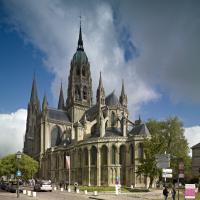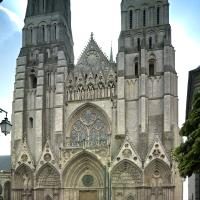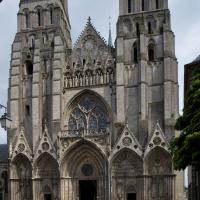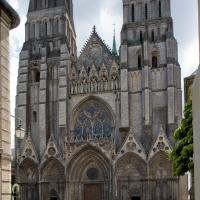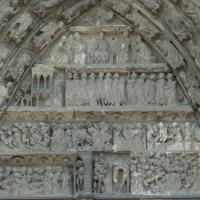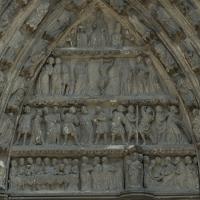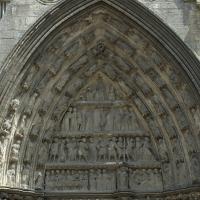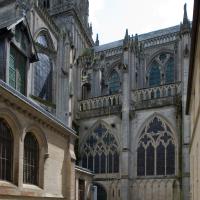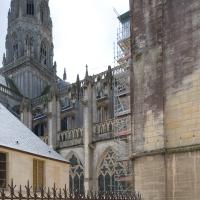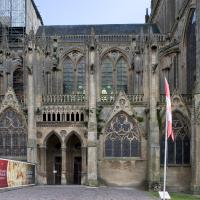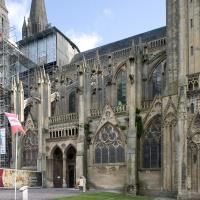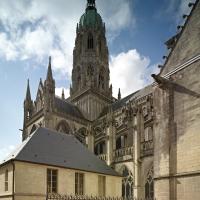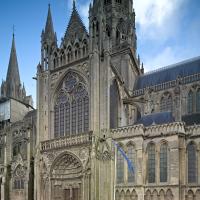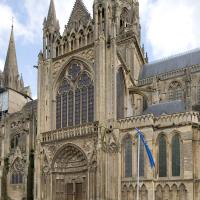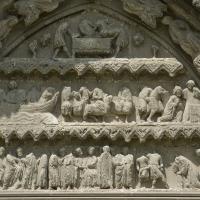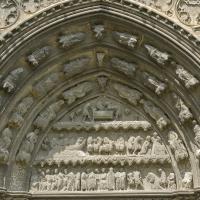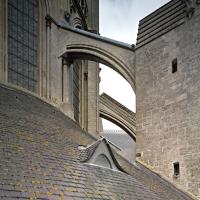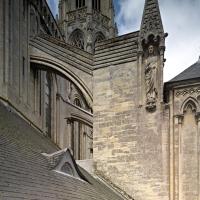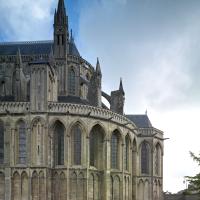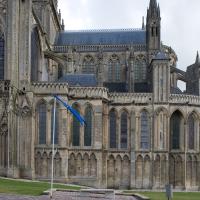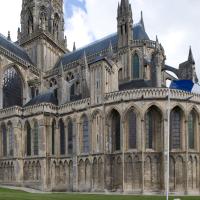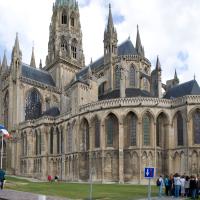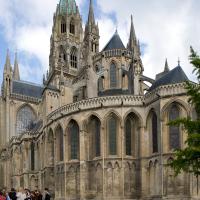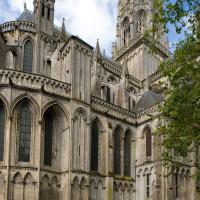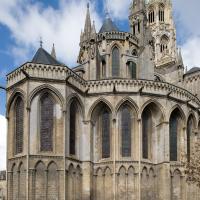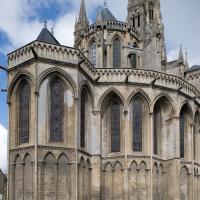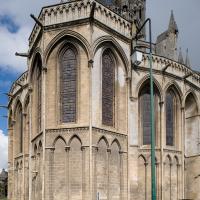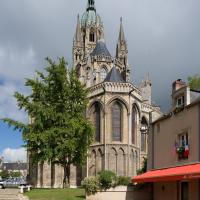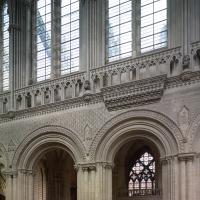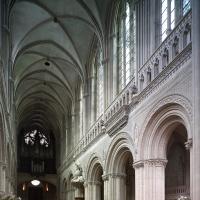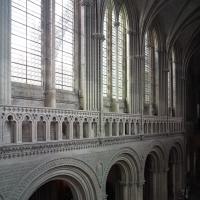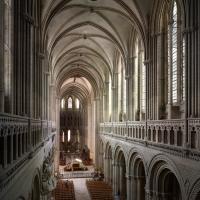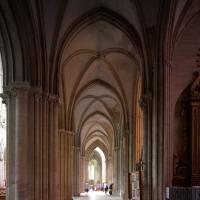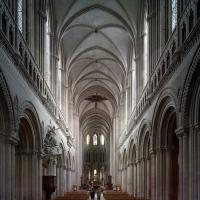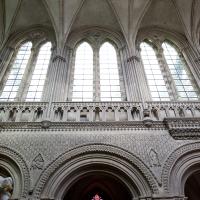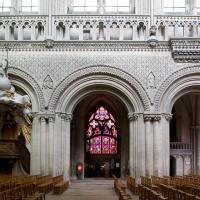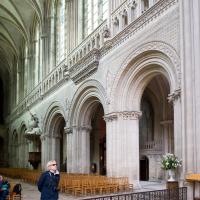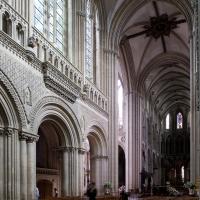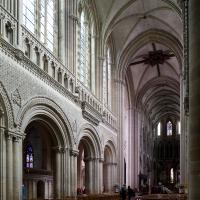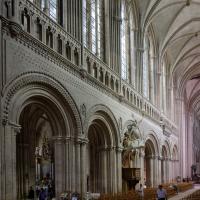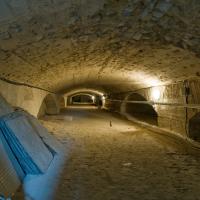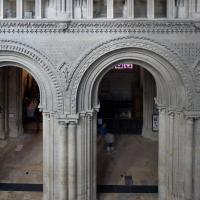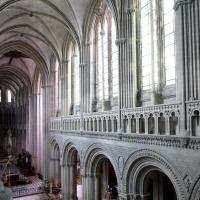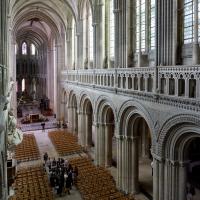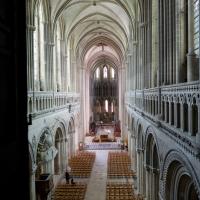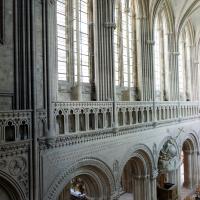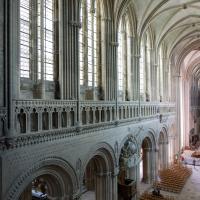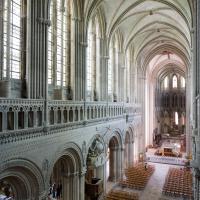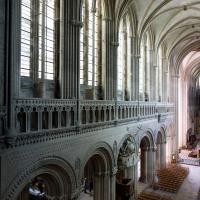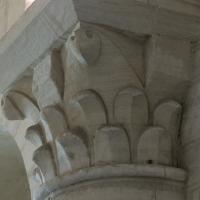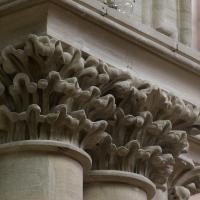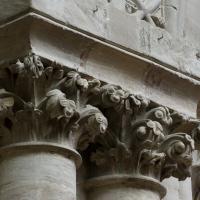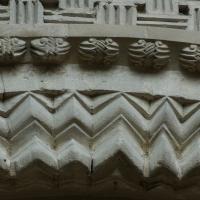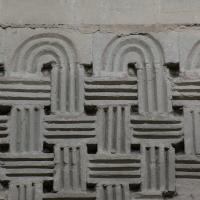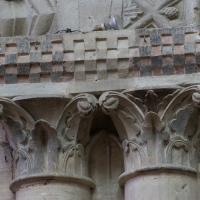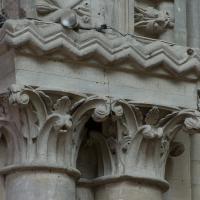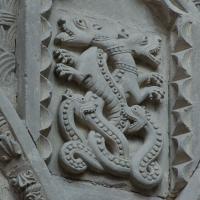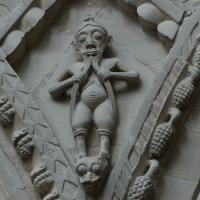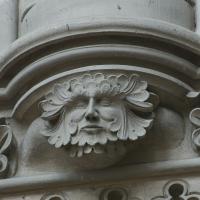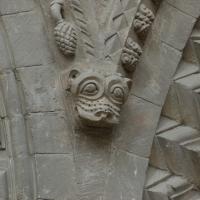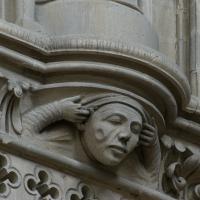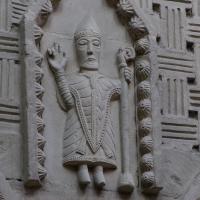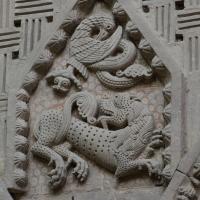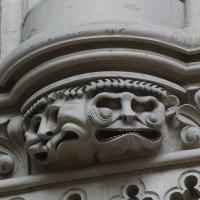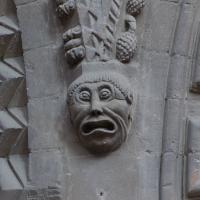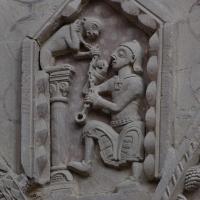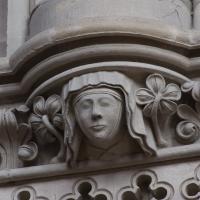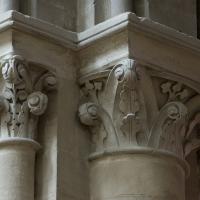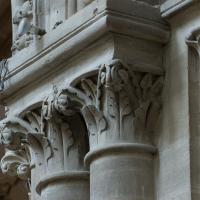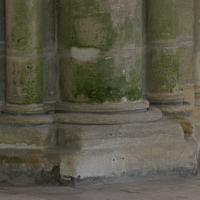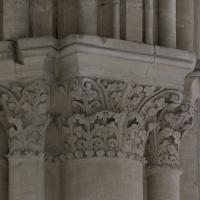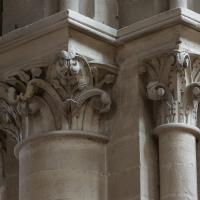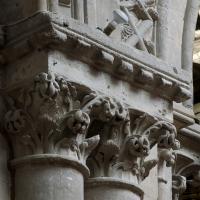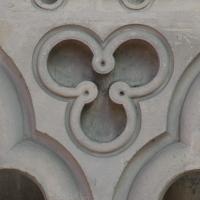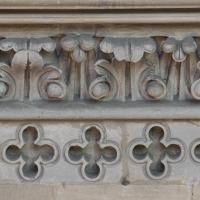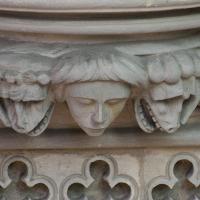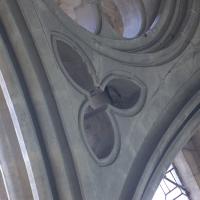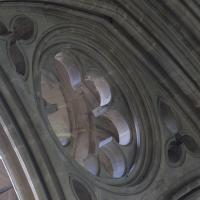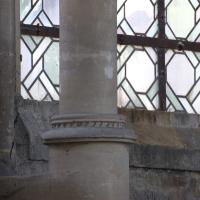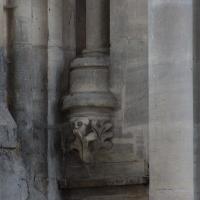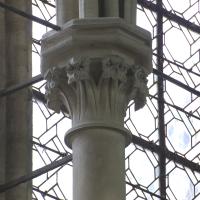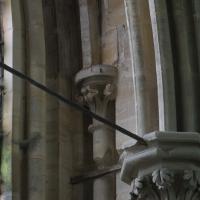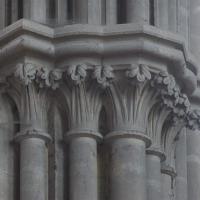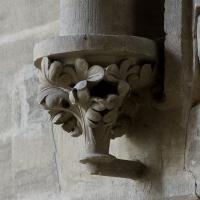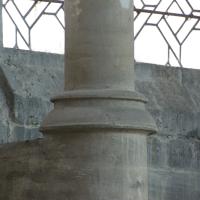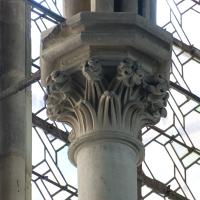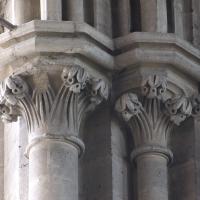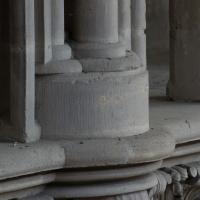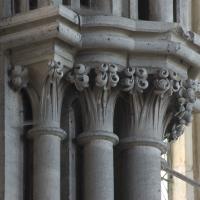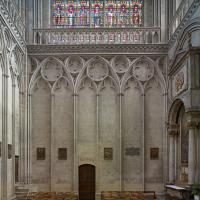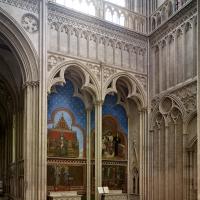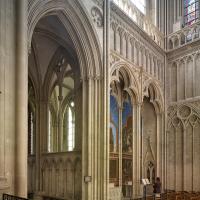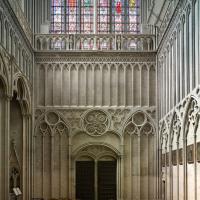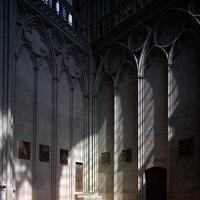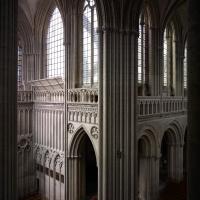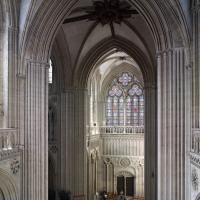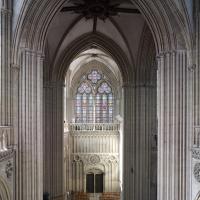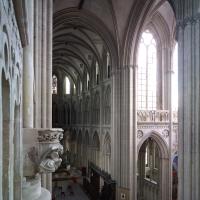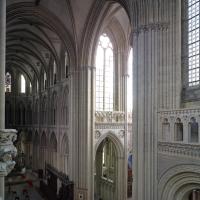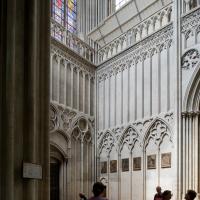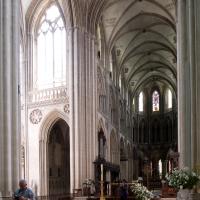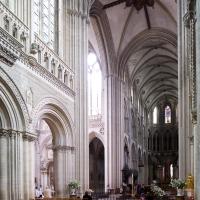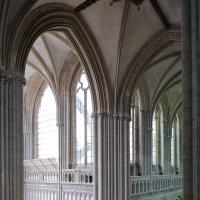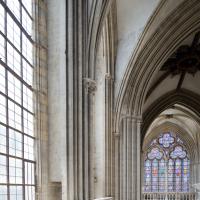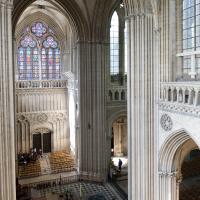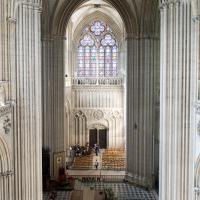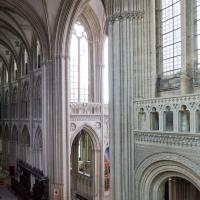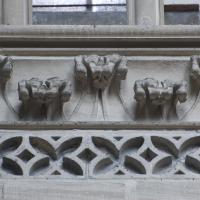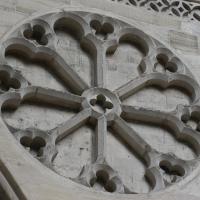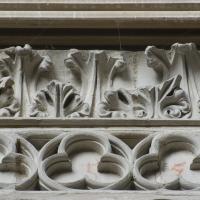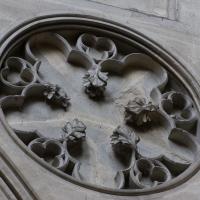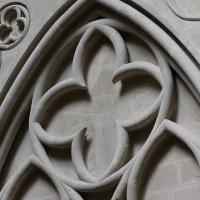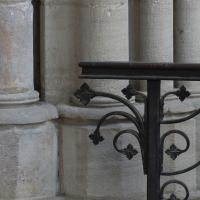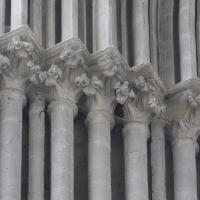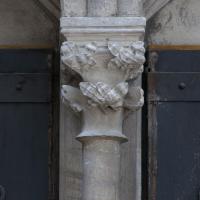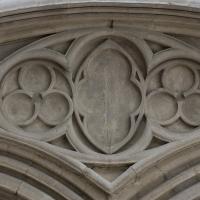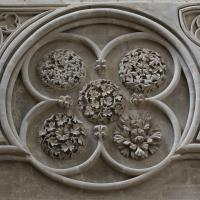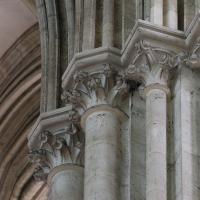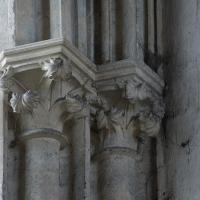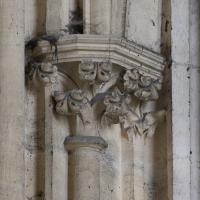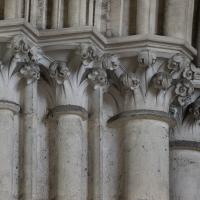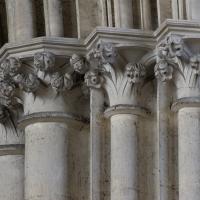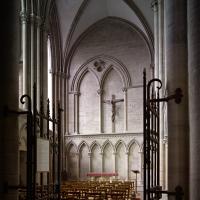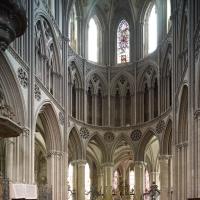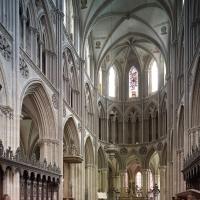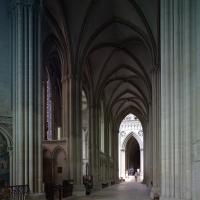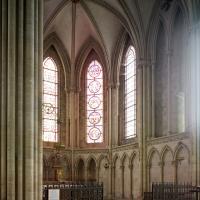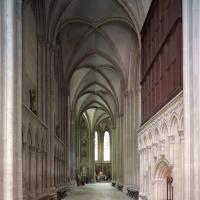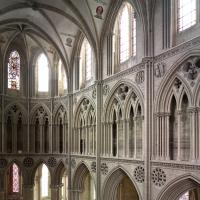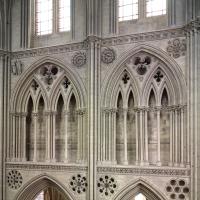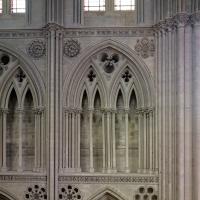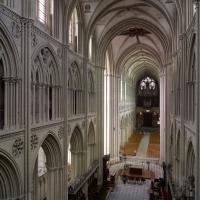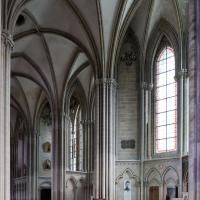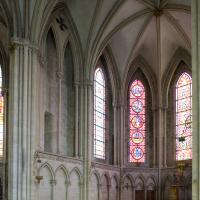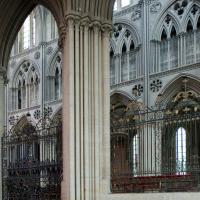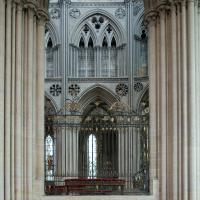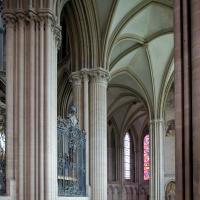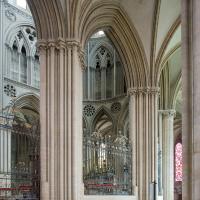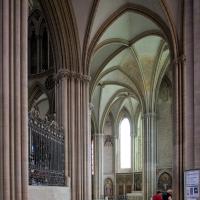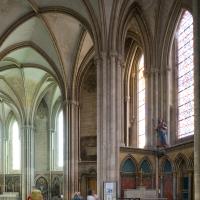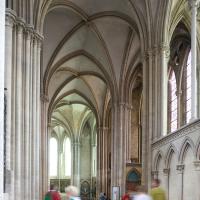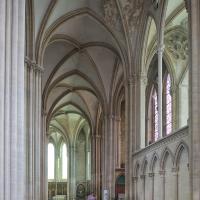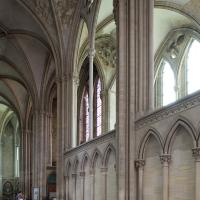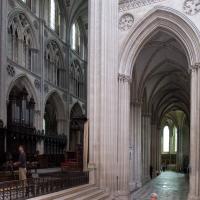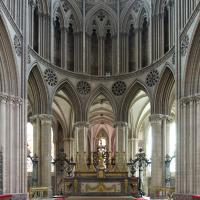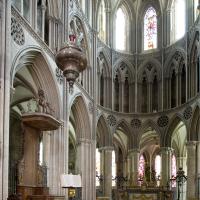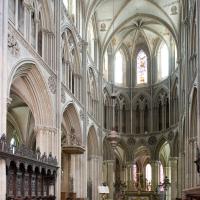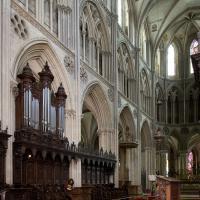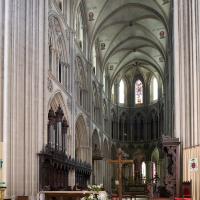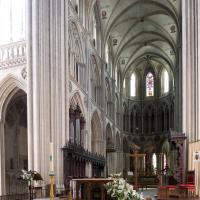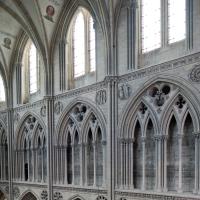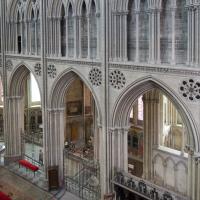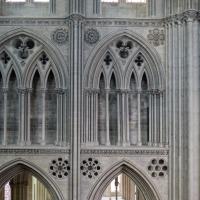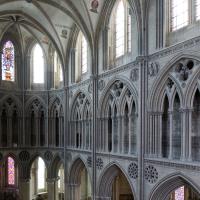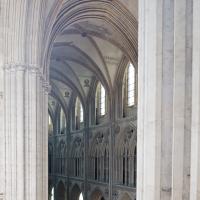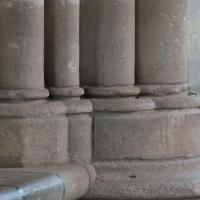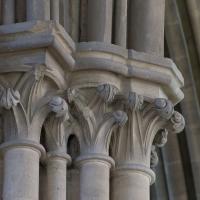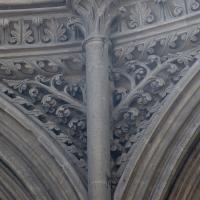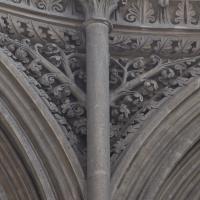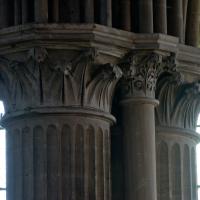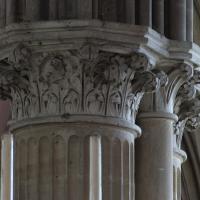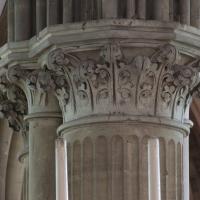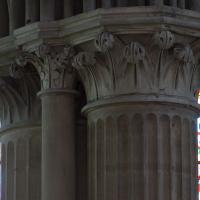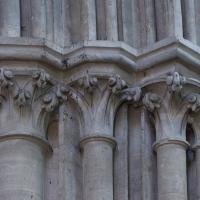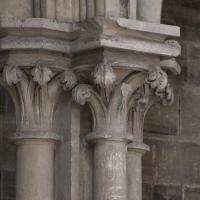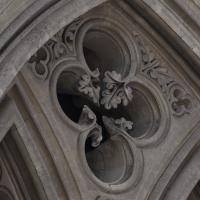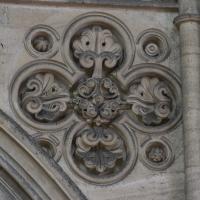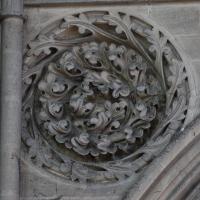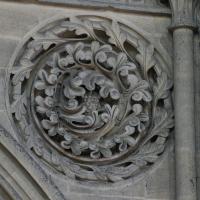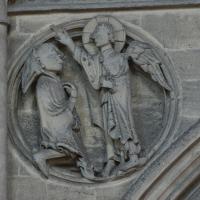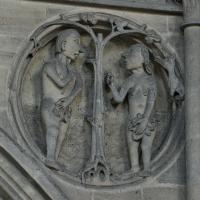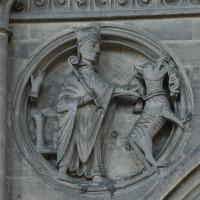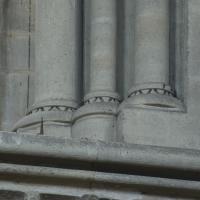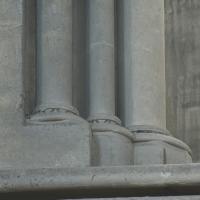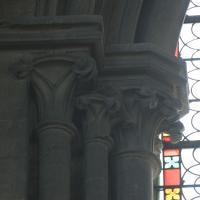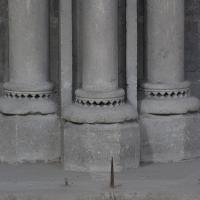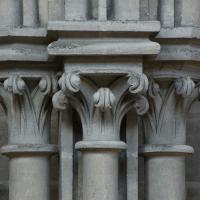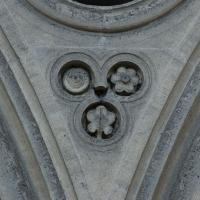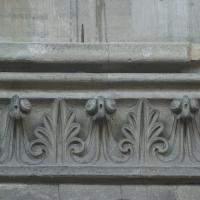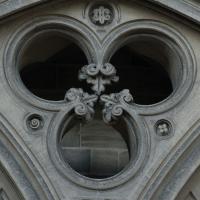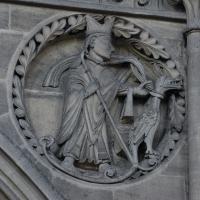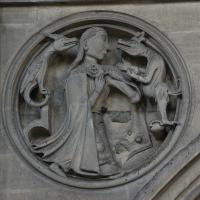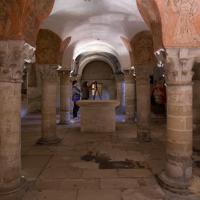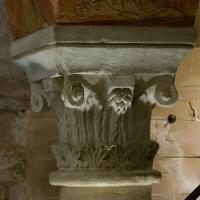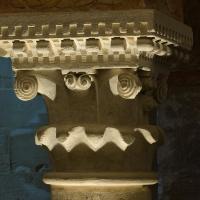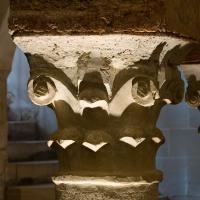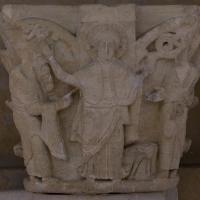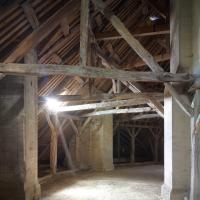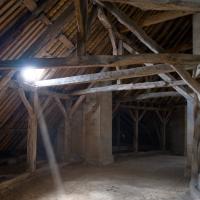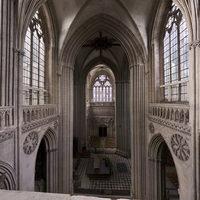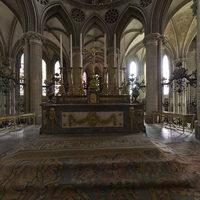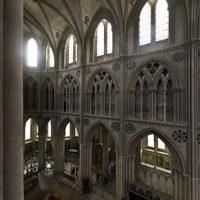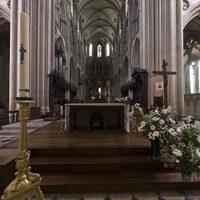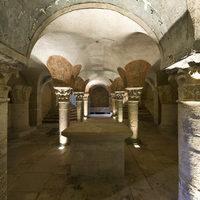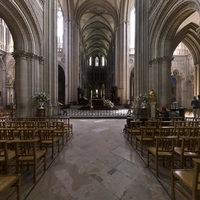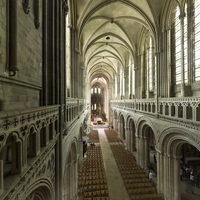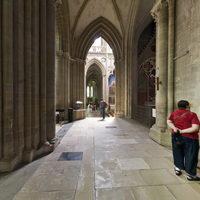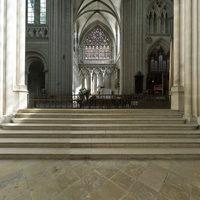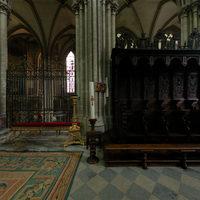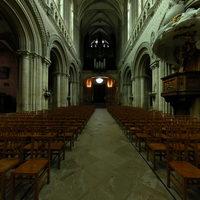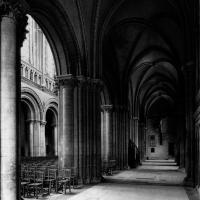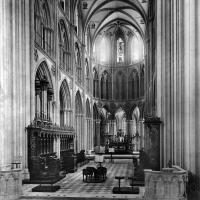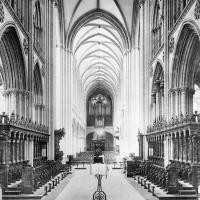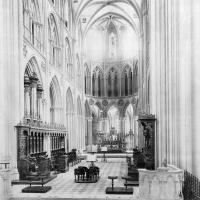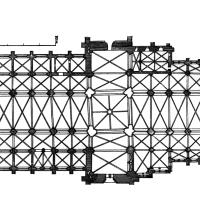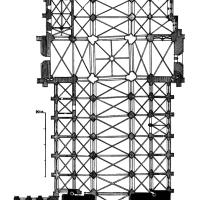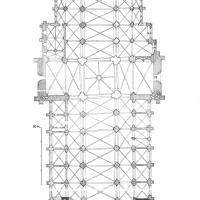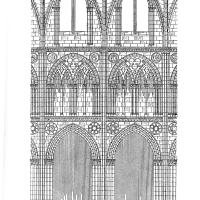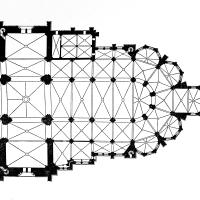Images
VR Tour
Notes
History
The origins of the cathedral lie in an episcopal group (including churches of S-Etienne and Notre-Dame) established inside the cité by Bishop Regnobert, documented in 627. Notre-Dame was rebuilt successively in the 11th and 12th centuries. The 11th-century cathedral gives us the overall plan of the existing edifice. It had a 6-bay nave flanked by aisles, a generous transept and a deep, aisled choir (ambulatory and perhaps chapels). In the 19th century the discovery of remains of the Romanesque cathedral in the transept permitted a reconstruction of the original elevation with a gallery and wooden roof. The 11th century church was constructed with a three-story elevation on the same considerable scale as, for example, Jumièges. The work was initiated by Bishop Odon de Conteville (1049-1097), born of the same mother as Willam the Conquerer. The bishop had been rewarded for his participation in the Conquest with the county of Kent which helped supply some of the funds needed for an enormously expensive new cathedral. The cathedral was dedicated on July 14 1077. The cathedral was damaged in two fires (1077 and 1105), yet substantial parts of the older cathedral (lower west façade and towers; crypt) survived and were built into the new edifice which was probably begun under Bishop Richard II (1108-31), a favorite of King Henry II. The upper towers were rebuilt and the nave arcade and aisles laid out. A new crossing tower was built. This is the campaign (c1110-c1130) that includes the existing nave arcade with its extraordinary decoration. Yet another catastrophe ensued -- a fire in 1160 ravaged the cathedral. Reconstruction work was led by Bishop Henry II (1165-1205) who applied to the fabric the income from prebends (in first year of appointment and after death). The front surfaces of the grand arcade of the nave were left intact, but the piers were retrofitted to receive rib vaults in the aisles and a new inner order in the main arcade. Crocket capitals and moulding forms recall prototypes in the Ile-de-France. The choir was rebuilt between 1230 and 1245: decorative forms resemble the earlier choir at Lisieux. Work then returned to the nave where the superstructure was rebuilt between around 1245 and 1255. The transept arms were entirely rebuilt between around 1260 and 1280. Decorative forms characteristic of Picard "rayonnant." Bishop Odon (1259-1274) was a familier of King Louis IX.
Date
Begun ca. 11th century
Sculptural Program
The west façade of Bayeux Cathedral contains two sculpted portals. The south portal is eschatological and displays scenes of the Last Judgment. It is generally considered to lack organizational clarity compared with other Last Judgment scenes, particularly those in the Ile-de-France. The registers of the lintel are divided unevenly with inconsistent decorative molding. The individual carved blocks that were set into the portals are highly visible. Additionally, the portal is heavily damaged. The lowest lintel shows the resurrection of the dead on the left, and damned souls being carried by demons into hell on the right. The division between the resurrected souls and the torments of hell is not symmetrical, with more space devoted to the damned. The next register depicts souls rising from their tombs. The third register depicts saved souls being ushered into a heavenly city by St. Peter. The tympanum depicts Christ in Majesty flanked by angels, with the Virgin Mary and John the Evangelist at the outer edges. Above might have been an image of God the Father, or of Christ at the Second Coming. The figure of Christ is the same proportionally as the figures below, and as a result he barely stands out in the composition. There are four bands of voussoirs showing a mixed array of angels, prophets, Old Testament figures, and holy women. The jamb sculptures are all now missing.
The north portal depicts scenes from the Passion of Christ. The lowest register of the lintel depicts, from left to right, the Last Supper, the Betrayal, and the Washing of the Feet. The second register shows, from left to right, the Kiss of Judas, the Arrest of Christ, the Flagellation, and the Carrying of the Cross. The third register shows the Crucifixion itself, Christ is enthroned in majesty on the tympanum. The four bands of voussoirs on this portal are heavily damaged, and show angels, holy women, and prophets. The jamb sculptures on this portal are all also now missing.
These portals are dated c. 1255-1280, and show a distinct Norman desire to attempt the complex sculpted portal programs of the great churches in the Ile-de-France region. Its program was one of the largest sculptural projects of the second half of the thirteenth century. Despite the valiant effort to imitate the great programs of the area around Paris, it is clear that the workshop at Bayeux was of lesser talent, and perhaps not quite up to the task.
The south transept portal of the cathedral is also sculpted, showing scenes from the life of St. Thomas Becket. On the lowest lintel, a large assembly of figures witnesses Becket before the King. The next lintel shows, from left to right, Becket traversing the sea from France to England, his return to the church, and his murder at the altar. The tympanum shows King Henry II visiting the tomb of Becket.
This portal dates from c. 1255-1280, and is the only sculpted transept. The south transept arm faced a public thoroughfare, thus it stands to reason that sculpture would be added to this façade and not the north. The choice of theme relates to the popularity and renown of the story of St. Thomas Becket at the time in France. Illustrated manuscripts detailing the life of the saint had been translated to the vernacular and were circulating through France. Additionally, Becket had visited Bayeux during his exile from England, and one of the attempted reconciliations between he and Henry II had been staged at the Cathedral. Thus the story had distinctly local ties as well as popular appeal. The execution of this tympanum seems more orderly and well-planned than those of the west façade.
Location
Bibliography
Baylé, M., "Chapiteaux provenant de la cathédrale romane de Bayeux," Bulletin de la Société nationale des antiquaries de France, 1980, pp 45-50
Bertaux, J.-J., "La cathédrale de Bayeux," L'art de Basse-Normandie, 54, 1969 18-43
Deslandes, E. G., Étude sur l'église de Bayeux; antiquité de son ceremonial, son chapitre, disposition dur choeur de la cathédrale,Caen, 1917
Dion, H. de, Cathédrale de Bayeux; reprise en sous-oeuvre de la tour centrale par M.E. Flachat; description des travaux, Paris, 1861
Mylne, R. S., The cathedral church of Bayeux, and other historical relics in its neighborhood, London, 1904
Neveux, F., "La cathédrale de Bayeux dans l'histoire de la ville," Annuaire des cinq départements de Normandie, vol. 148, 1982, pp 63-67
Plant, R., "Ecclesiastical architecture, c. 1050 to c. 1200," A Companion to the Anglo-Norman World, Ed. Christopher Harper-Bill and Elisabeth van Houts, Woodbridge, Suffolk, 2003, pp 215-253
Pouchain, G., La cathédrale de Bayeux, Condé-sur-Noireau, 1984
Thirion, J., "La cathédrale de Bayeux," Cong arch. 132, 1974, 240-285
Vallery-Radot, Jean, Cathédrale de Bayeux, Paris, 1958


